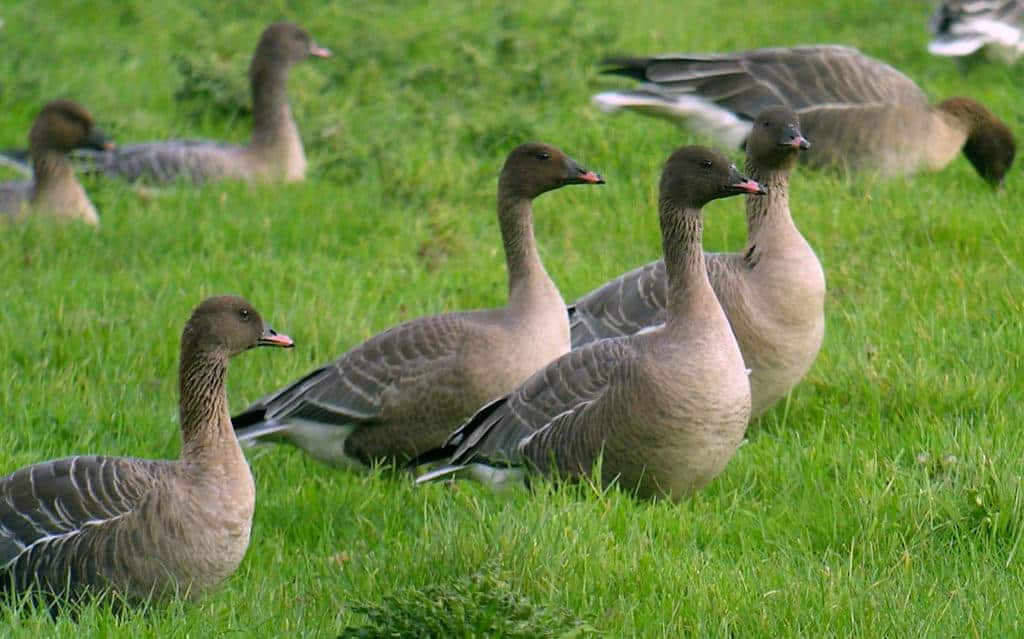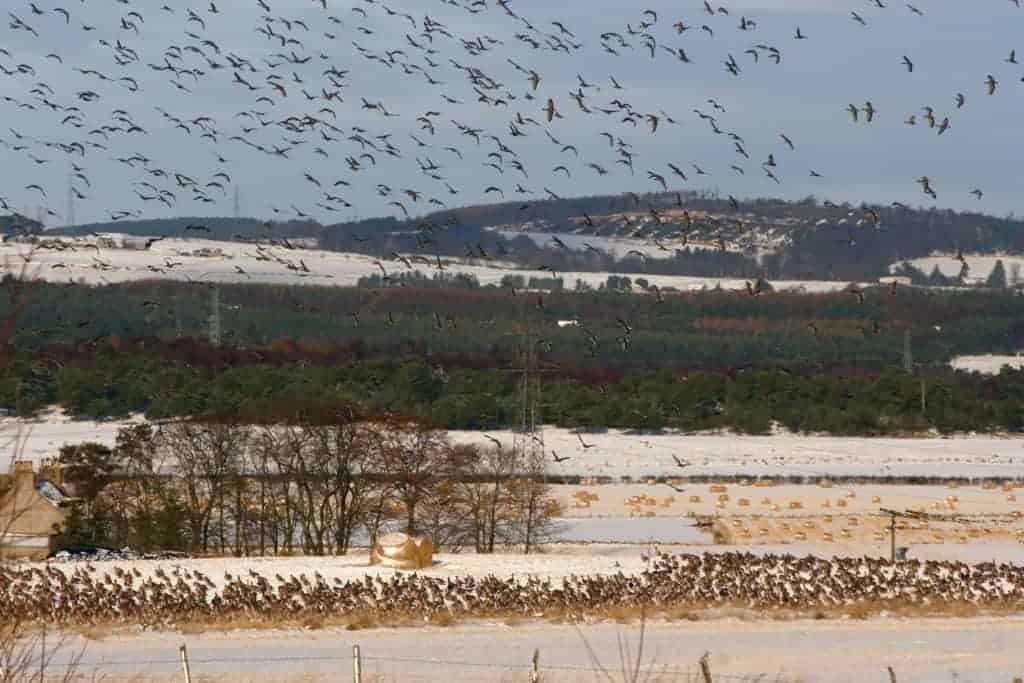Pink-footed Goose


Anser brachyrhynchus
One of six species in the genus Anser (so-called grey geese) that occur in Europe, the Pink-footed Goose breeds on the arctic tundra of Iceland, East Greenland and Svalbard. Most of the population winters in Britain, with flocks of many thousands of birds found principally in eastern Scotland, the Solway, Lancashire and Norfolk, where they feed on arable land. Numbers have increased considerably in the last 40 years. Nevertheless, they are Amber-listed in Britain as 90–100% of our wintering population is found at ten or fewer sites, making-up 70–80% of the European population.

Their rose-pink legs best identify these compact, dark-headed geese, while the short stubby beak also has a pink band. They are highly vocal birds, their calls higher-pitched and shriller than the larger grey geese. There are no subspecies or geographical variations, though this goose was once considered to be a subspecies of the closely related Bean Geese.
Pink-footed Geese do well in a collection, especially if kept in small flocks, as they are highly gregarious.
The Pink-footed Goose alone incubates the clutch of 3–5 eggs, for about 26 days. She lays in the open, but the gander remains with her, and both parents rear the goslings. The goslings will stay with their parents until the following spring.
Share this page